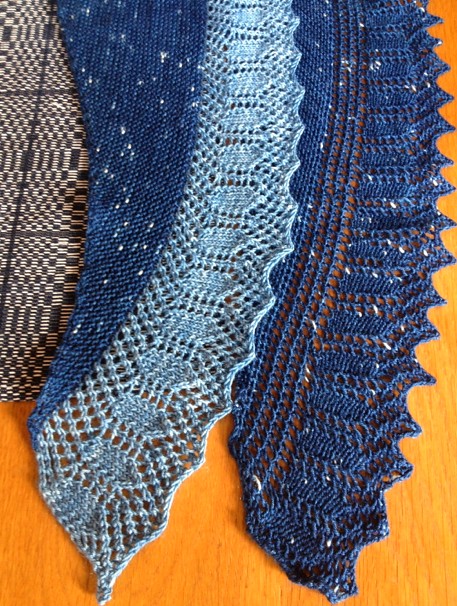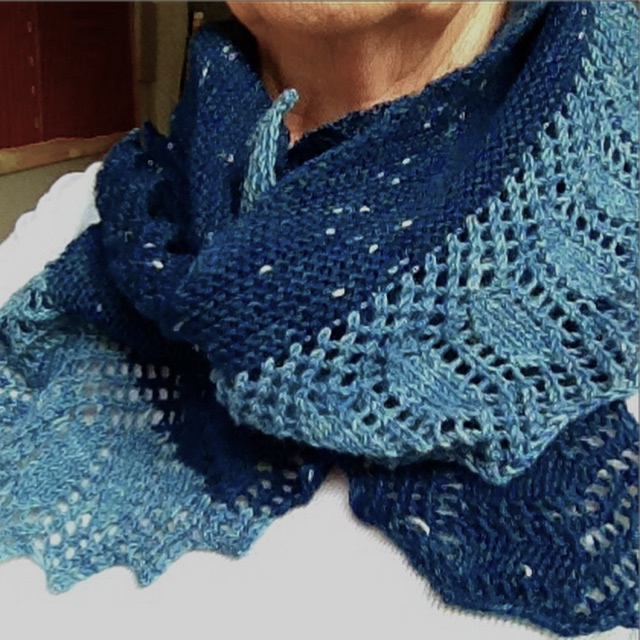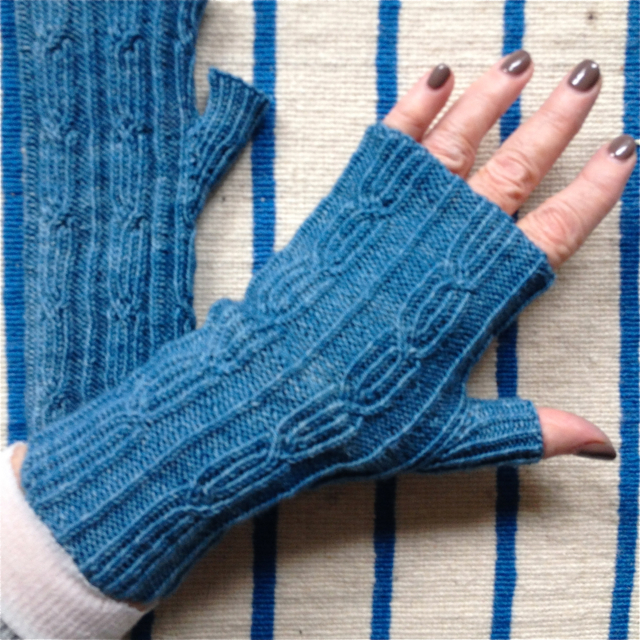I decided to knit the Magrathea scarf/shawl designed by Martina Behm - a slightly asymmetrical shape that's a lacy variation of her very popular 'Hitchhiker' design.

I began with the deep navy but didn't have quite enough yarn for the length and scarf shape I wanted, so I decided to add the final lacy edge in the mid-blue. One of the lovely things about using indigo-dyed yarns or fabrics is that you can be sure that all the variations of hue will match perfectly with each other. I'm very happy with the outcome:


This project has set me wondering about what I find so satisfying about working with indigo dyed yarn. Of course it's beautiful with the subtle variations of blue that merge into one another. And in our modern world where we have instituted so many controls to standardise products there's something satisfying about the random and organic nature of indigo dying. You can never be quite sure what the outcome will be. I also find pleasure in knowing that indigo dying is a process with a long history spread across textile traditions in many countries. Among my rather random memory associations for indigo is a visit in the 1970s to Vigan, an old Spanish city in the northern Philippines, where I was shown huge chest-high pottery vats (bangay) that had been used for dying indigo fabrics that were exported to China in the eighteenth century as part of the Spanish galleon trade. Years later, maybe around 2000, I visited Sapa in the northern mountainous region of Vietnam. Here I saw women of the Black Hmong group using similar pottery jars, but also plastic garbage bins, to dye indigo fabrics from locally grown plants. Some of the fabrics were used to produce the fine indigo background of the women's traditional embroidered dress,

but much of it was quite roughly dyed for the tourist trade. On the overnight train returning from Sapa we shared our sleeping compartment with a young French couple. In the morning, the young man, who was wearing an indigo shirt he'd purchased in Sapa, was dyed blue from neck to hip!
To get back to my knitting... when I'd finished my Magrathea scarf I still had most of my skein of mid-indigo yarn left, so I decided to make some fingerless mitts for a neighbour who'd been complaining of her cold hands. I chose a pattern I'd long admired, probably jane's Glasgow School Mitts - so named because of its echoes of Charles Rennie Mackintosh's lovely early 20th century designs. This yarn has quite a tight twist and is ideal for displaying the small but intricate cables of this pattern.

I still have 49 grams of the mid-indigo yarn left. I'd love to use it all up, so I'm interested in ideas for another small indigo project.
1 comment:
I love that shawl and the blue is wonderful. As for a use for the rest, I have made the Stepping Stones cowl (on ravelry at http://www.ravelry.com/patterns/library/stepping-stones-cowl). It's a nice pattern and makes excellent use of a small amount of yarn.
Post a Comment